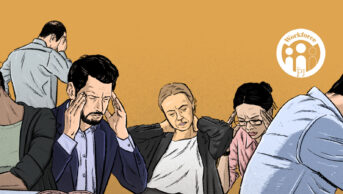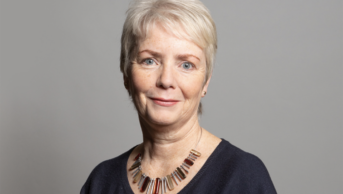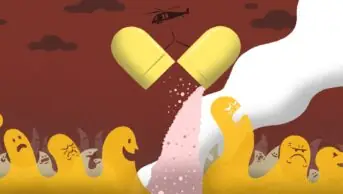
Shutterstock.com
Community pharmacy staff should look for warning signs of self-harm or suicide when dispensing medicines and use consultations or medication reviews to ask certain patients if they have had ever considered it, says the National Institute for Health and Care Excellence.
In new draft guidance — ‘Self-harm: assessment, management and preventing recurrence’, which was published on 18 January 2022 — NICE said that all healthcare professionals should be assessing the risk of self-harm, defined as “intentional self-poisoning or injury”, in their interactions with patients (see Box).
Guidance aimed specifically at pharmacy staff adds that community pharmacy staff “should be aware of warning signs relating to self-harm”, such as people buying large amounts of over-the-counter (OTC) medicines or those who have access to large amounts of medicines.
The draft guidance also says that all healthcare professionals should use consultations or medication reviews where appropriate to ask higher-risk individuals if they have had thoughts of self-harm or suicide. This also applies to patients who have access to substances that could be used to cause injury.
“The committee agreed that when pharmacy staff are aware of warning signs and when healthcare professionals are prepared to use consultations to discuss self-harm, the opportunities for people to self-poison or overdose are reduced,” it states.
NICE also recommends that healthcare professionals should review the toxicity of the prescribed medicines for people who has previously self-harmed and remain at risk of self-harm, owing to risk of overdose.
“This would allow for staff to amend any prescriptions as appropriate to reduce the risk of future self-poisoning,” it adds.
Accurate figures on self-harm are difficult to obtain, but data show that there was a 37% rise in hospital admissions for self-harm between 2012/2013 and 2019/2020 in girls and young women in England. The rate has remained roughly constant in young males.
Paul Chrisp, director of the centre for guidelines at NICE, said that self-harm was “a growing problem” and should be “everyone’s business” to tackle, not just those with mental health expertise.
“These guidelines set out a way for every person who self-harms to be able to get the support and treatment they need,” he said.
Ciara Ni Dhubhlaing, president of the College of Mental Health Pharmacy, welcomed the recognition of the key role that community pharmacists often play in managing risk for those who self-harm using deliberate self-poisoning.
“Community pharmacists may identify people at risk due to OTC purchases or dispensing of prescribed medication,” she said, adding that training in managing possible disclosures, particularly regarding knowledge of and access to local services, would be important.
“Community pharmacists are unlikely to feel confident asking such questions without good knowledge of the appropriate next steps.
“It speaks again to the importance of integration of the community pharmacist into an individual’s care and treatment — without access to patient notes and integration into multidisciplinary team working, the community pharmacist potentially holds some of that risk themselves.”
A public consultation on the draft recommendations will run until 1 March 2022.
Box: What does the new guidance say?
- When prescribing medicines to someone who has previously self-harmed and remains at risk of self-harm, healthcare professionals should take into account:
- the toxicity of the prescribed medicines for people at risk of overdose (for example, opiate-containing painkillers and tricyclic antidepressants);
- their recreational drug and alcohol consumption, and the risk of misuse;
- the person’s access to the prescribed medicines when assessing their risk of suicide or self-harm.
- Use shared decision making to discuss limiting the quantity of medicines supplied to people with a history of self-harm and ask them to return unwanted medicines for safe disposal;
- Consider carrying out a medicines review after an episode of self-harm. Take into account the pharmacokinetic properties of medicines; for example, half-life, risk of toxicity and the concurrent use of medicines such as benzodiazepines and opiates;
- Community pharmacy staff should be aware of warning signs relating to self-harm, such as identifying people who are buying large amounts of over-the-counter medicines or who have access to large amounts of medicines.
- Healthcare professionals, including GPs and community pharmacy staff, should use consultations and medicines reviews as an opportunity to assess self-harm if appropriate; for example, asking about thoughts of self-harm or suicide, actual self-harm and access to substances that might be taken in overdose (including prescribed, over-the-counter medicines, herbal remedies and recreational drugs);
- All staff who work with people of any age who self-harm should have training specific to their role so that they can provide care and treatment outlined in this guideline, for example, to cover discussing self-harm with the person in an open way to explore the reasons for each episode of self-harm.
Read more: Suicide — how to recognise the warning signs and deal with disclosure


